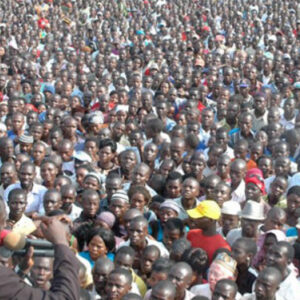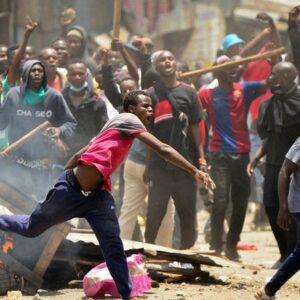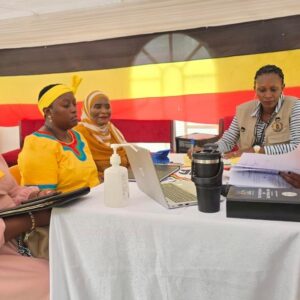KAMPALA, Uganda – Uganda’s election roadmap took a defining turn today as President Yoweri Kaguta Museveni Tibuhaburwa was officially nominated by the Electoral Commission as the National Resistance Movement (NRM) flagbearer for the January 12, 2026 General Elections.
At 81, President Museveni remains a towering figure in Ugandan politics, widely credited with transforming the country from the turmoil of the 1980s into a modern economy anchored on stability, growth, and social progress. His new campaign, launched under the theme “Protecting the Gains”, pledges to consolidate these achievements while steering Uganda toward an ambitious future.
The nomination ceremony at the Electoral Commission headquarters in Lweza, Kampala, was marked by jubilant celebrations from thousands of NRM supporters, draped in yellow and chanting “Sebbo M7.” Justice Simon Byabakama, the EC Chairperson, confirmed that Museveni had fulfilled all requirements under the Presidential Elections Act, securing more than 2 million signatures – well above the mandatory threshold.
“This is a leader who has consistently delivered,” said one delegate.
A Leader Who Changed Uganda’s Story
Since taking office in 1986, Museveni has overseen one of Africa’s most remarkable transformations. From an economy worth just $1.5 billion at the time, Uganda’s GDP has expanded to nearly $66 billion today. Poverty levels have dropped by half, HIV/AIDS prevalence has been drastically reduced, and millions of children now attend school under Universal Primary Education.
For many Ugandans, his leadership represents continuity, peace, and a guarantee that the dark days of instability will not return. “Protecting the Gains,” the campaign theme, reflects this commitment to safeguarding national stability and pushing development to the next level.
The Roadmap: Six Pillars of Transformation
President Museveni’s 2026–2031 program, drawn from his acceptance speech and the forthcoming NRM manifesto, lays out an ambitious vision to propel Uganda into upper-middle-income status. His goal: expanding the economy from $66 billion to $500 billion within five years.
The plan is anchored on six key pillars:
- Peace and Security – Strengthening national stability while rooting out corruption at local levels to ensure that government resources reach ordinary Ugandans.
- Infrastructure Development – Expanding roads, railways, and energy access, including the long-awaited Standard Gauge Railway and full utilization of oil resources in the Albertine region.
- Wealth Creation – Expanding the Parish Development Model (PDM) to empower farmers, promote agro-processing, and increase household incomes through value addition.
- Jobs and Youth Empowerment – Creating five million new jobs through industrial parks, ICT hubs, and tourism, with a focus on training and opportunities for the youth, who make up the majority of the population.
- Social Services – Improving health care, education, and clean water access, with a promise of universal health coverage, 100% secondary school enrollment, and 95% safe water access nationwide.
- Markets and Trade – Deepening Uganda’s role in regional and global markets, particularly through the African Continental Free Trade Area (AfCFTA), while ensuring fair prices for farmers domestically.
Museveni’s “Money Economy” Framework
Addressing the media shortly after his nomination, President Museveni once again emphasized his long-standing vision of building a money economy in Uganda. He reminded Ugandans that prosperity depends on four key growth sectors:
- Commercial Agriculture – Moving farmers from subsistence to market-oriented production, supported by PDM loans, agro-processing, and guaranteed markets for crops like coffee, maize, and dairy.
- Industries and Manufacturing – Expanding industrial parks and promoting value addition to raw materials so that Ugandans benefit more from their natural resources, including oil and minerals.
- Services Sector – Strengthening tourism, transport, banking, and hospitality industries, which already employ millions and remain vital to Uganda’s GDP.
- ICT and Innovation – Harnessing the digital economy by extending broadband coverage, nurturing tech startups, and ensuring Ugandans are competitive in the knowledge-based global market.
“Every Ugandan must participate in one or more of these four sectors if we are to reach middle and high-income status,” the President said, stressing that this strategy has already lifted millions out of poverty and will be the cornerstone of his next term.
Building on Proven Success
The NRM’s development track record remains one of its strongest campaign assets. Under Museveni, Uganda has consistently registered growth rates above regional averages, built thousands of kilometers of roads, expanded electricity access, and maintained peace in a region historically prone to conflict.
The President has also been instrumental in positioning Uganda as a regional power, contributing troops to peacekeeping missions in Somalia and South Sudan, while championing regional integration through the East African Community.
Looking Ahead to 2026
With campaigning set to begin on 29th September, Museveni’s message will focus on unity, stability, and accelerated transformation. Opposition candidates are also in the race, but the NRM remains confident that Ugandans will once again choose continuity over uncertainty.
As the country heads into the 2026 elections, the central question is not just about who leads Uganda but about the direction the nation takes. For President Museveni and his supporters, the answer is clear: safeguard the peace, deepen development, and ensure that the gains of the past four decades are not lost.
“Uganda has come too far to risk turning back,” Museveni told his supporters.







When are we having nominations of other candidates? How many are in the race?